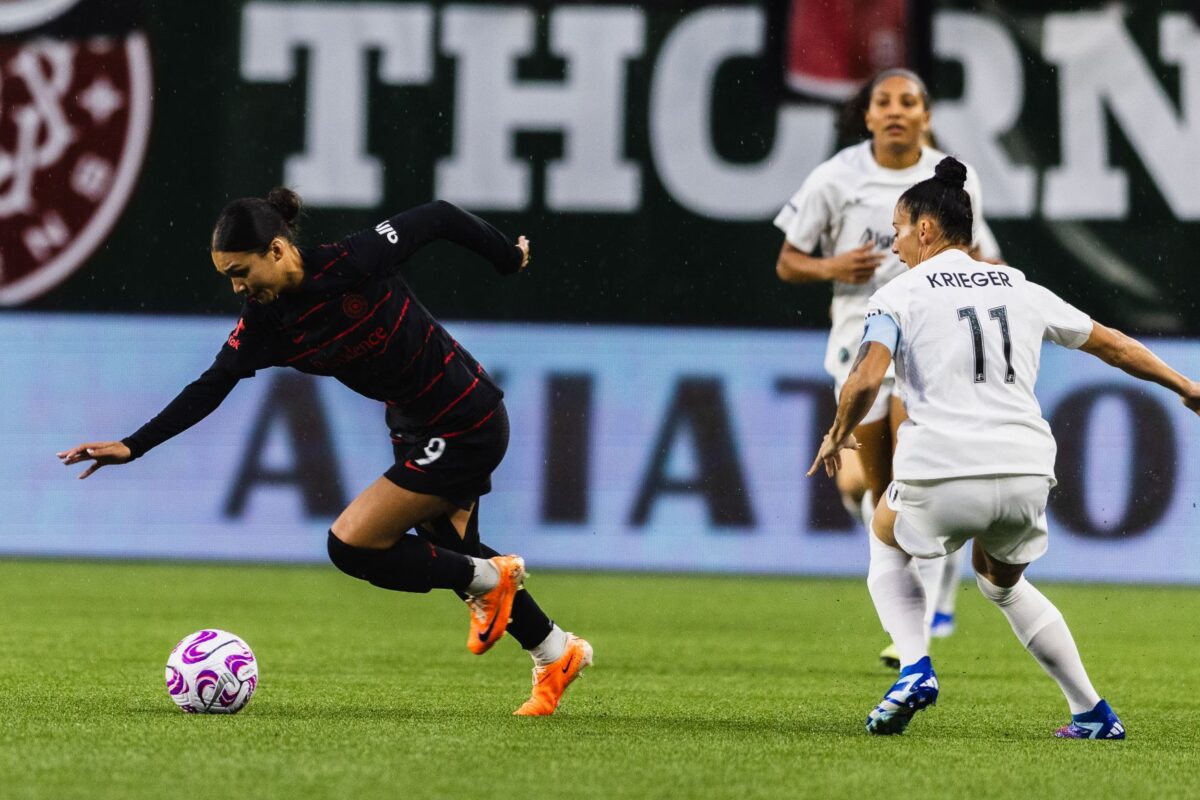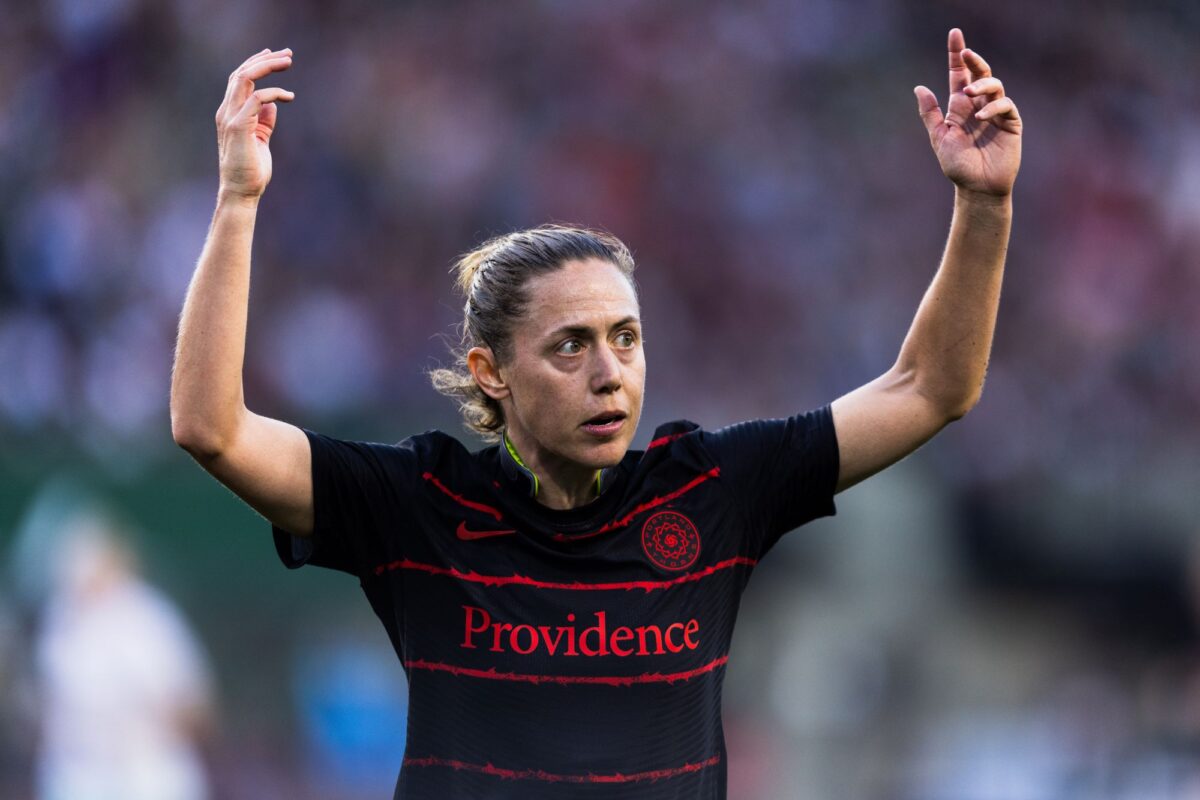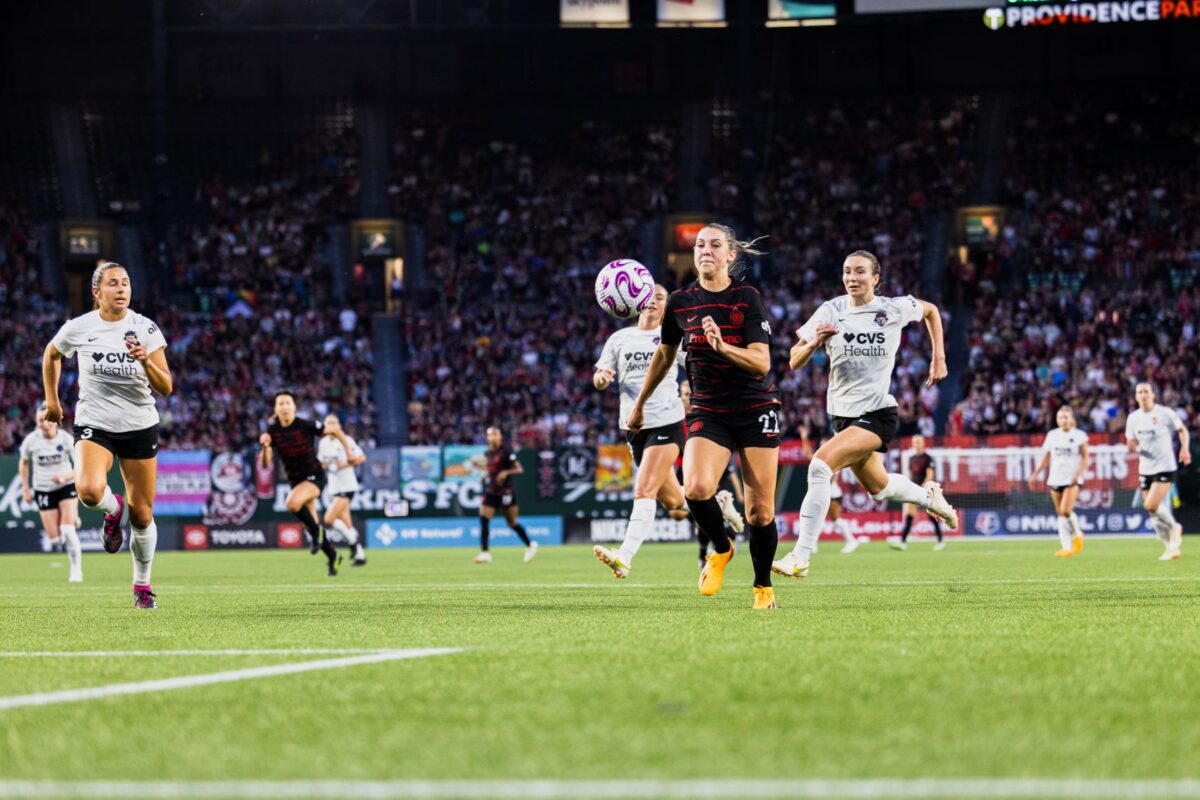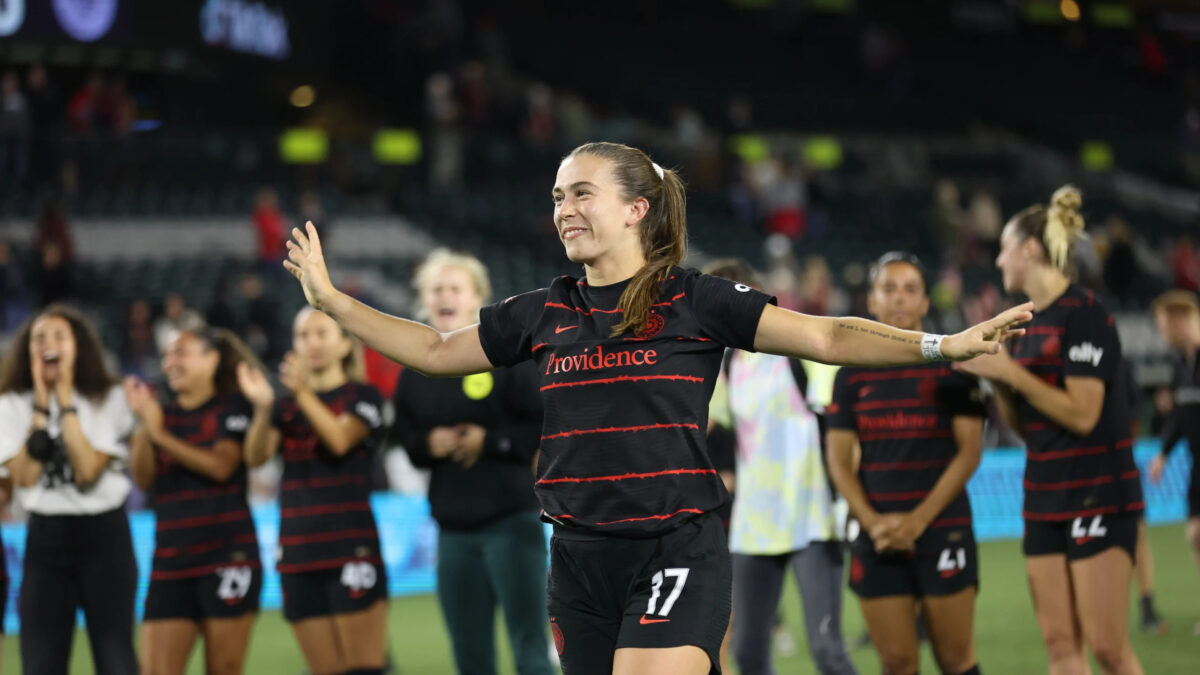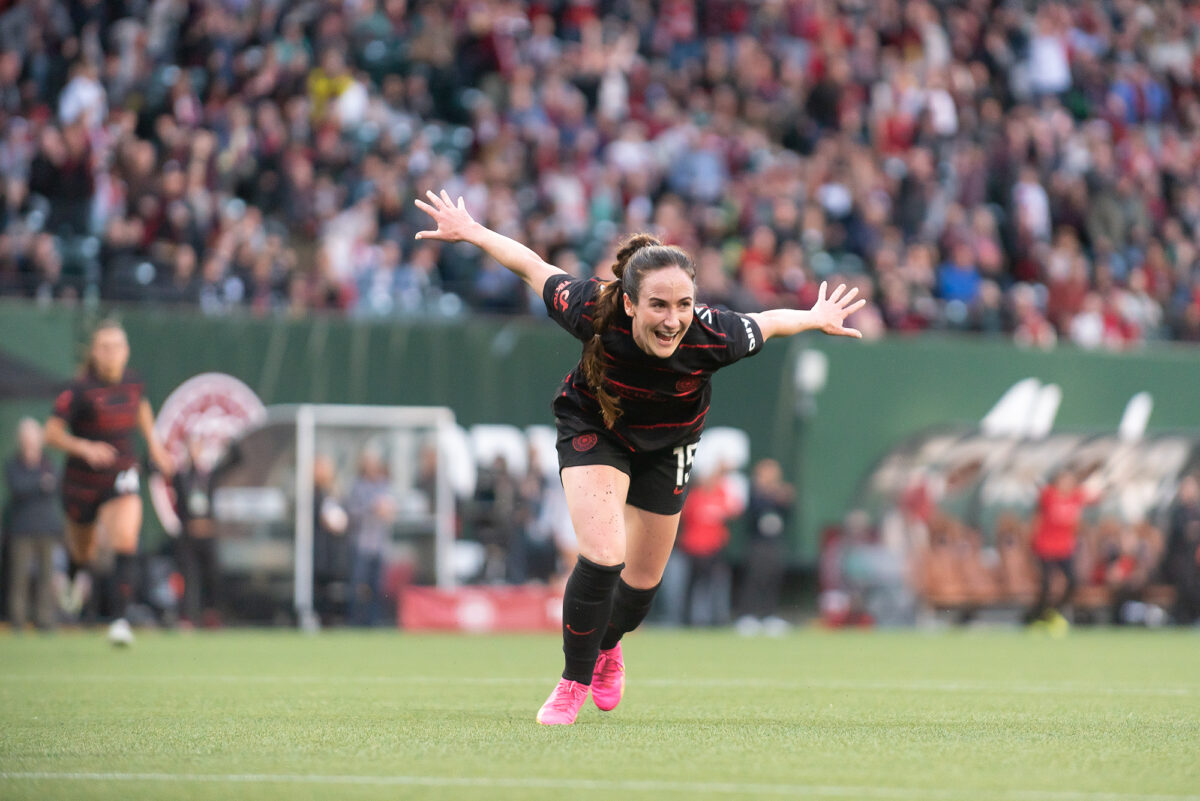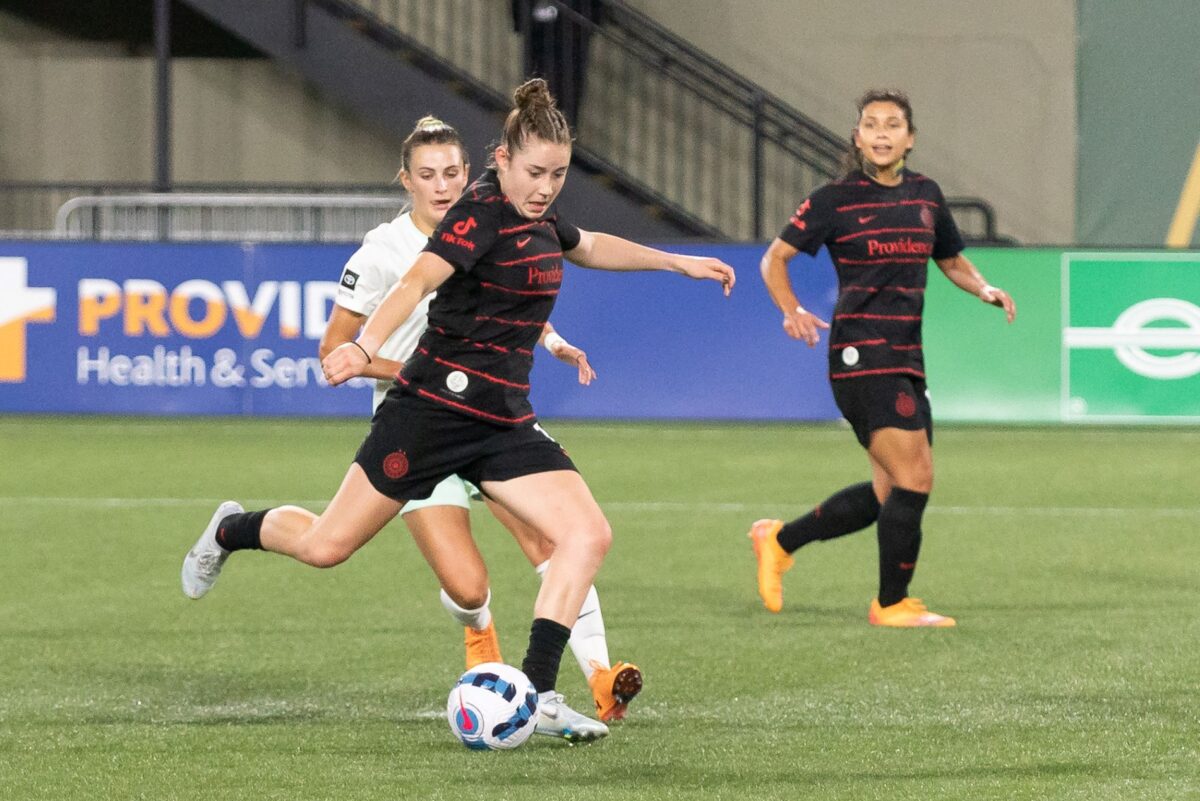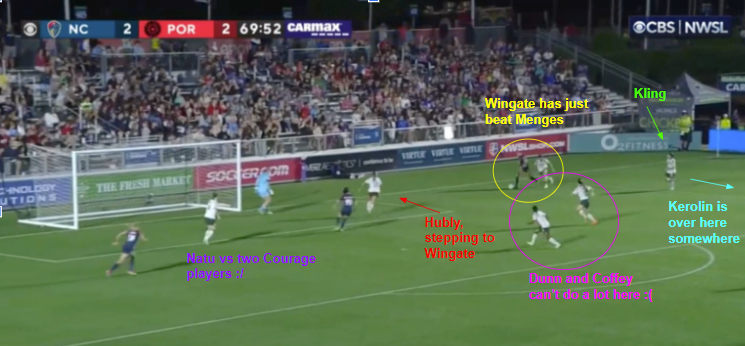The Portland Thorns’ new Ken-look-alike interim head coach Rob Gale has an undefeated record in the NWSL as Portland (finally) picks up their first home and road wins of the 2024 season. It’s been a slow and bumpy start to the season, and while it’s too early to make any calls on how competent Gale is as a coach, there is officially enough data to try and determine what type of team the Thorns are going to be under his interim tenure.
Renewed sense of urgency
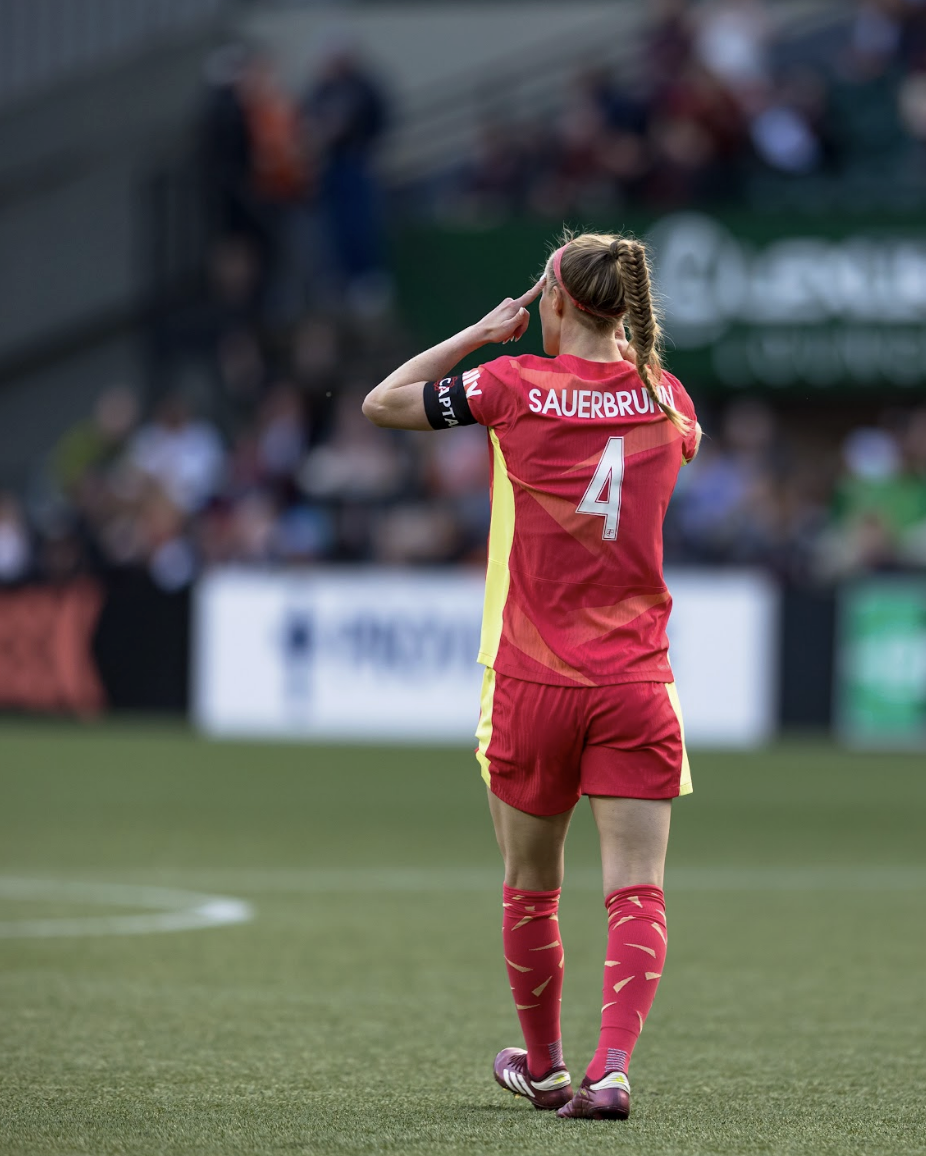
The Thorns conceded within the first 10 minutes of three of their four first games of the season. Luckily—or more likely, intentionally—Portland has flipped the script and were able to score first in the sixth and 10th minute of their last two matches. Postgame against Houston, Sophia Smith credited the fiery start to a change in the team’s warmup, something that ensures the team gets a taste of competition and “that fire in our blood flowing before we step on the field and the kickoff happens.” The new pregame ritual includes competitive games like rondos.
“To win is the expectation,” Smith said. “This is the Thorns that we know.”
Olivia Moultrie said these wins have felt like “the start of a new season for the Thorns,” as they set a new standard for performances going forward.
The lineup

Gale has not made many changes to the starting XI that the Thorns began the season with, but the two he did make made all the difference. Firstly, Hina Sugita has played 90 minutes in both games, compared to being a second-half sub under former head coach Mike Norris. Hina a versatile player that needs to be on the pitch and can slot in pretty much anywhere in the front six. She played as a box-to-box midfielder in both games, connecting 88% of her passes in those 180 minutes and earning one assist. Gale’s choice to exchange Hina for Moultrie in the starting XI balances out Portland’s midfield; as in the first few games of the year, we saw Moultrie and Jesse Fleming occupying many of the same spots, leaving empty gaps in the midfield for the opposition to play through.
After the Houston game, Gale said the midfield “smothered Houston” due to their pressing, and he was right.
Hina, Sam Coffey, and Fleming started against Chicago as well and worked very well together, combining for nearly 86% passing accuracy going forward. It seems as though the Thorns have found their ideal midfield trio going forward.
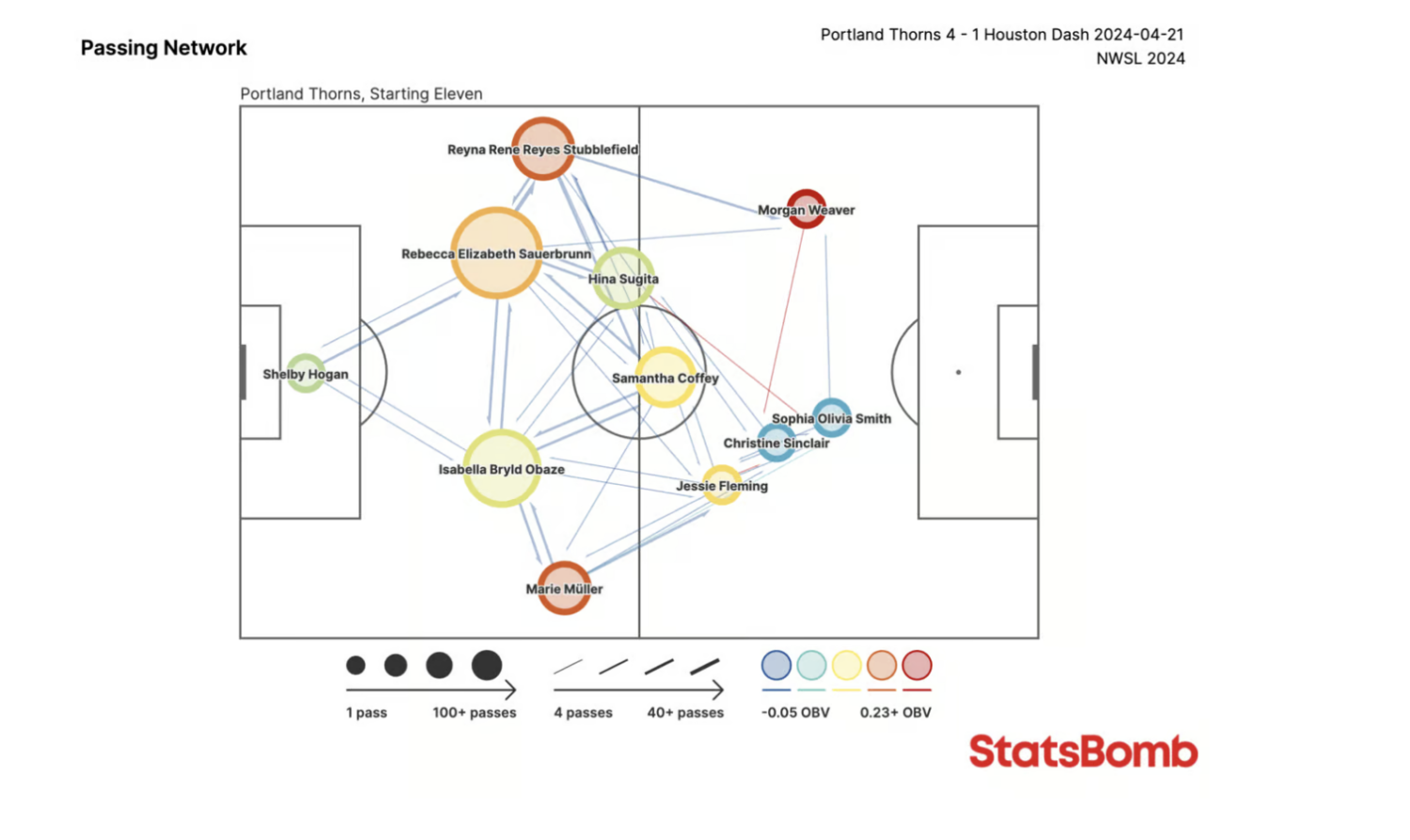
The passing map from the Houston game makes it clear that the Thorns have well-executed passing triangles, which result in quick give-and-goes up the side of the pitch. The front three look a little wonky because Christine Sinclair and Smith frequently switch between center and wide forward, but the triangles are still there.
The Thorns are finally looking like the well-oiled machine that they have been in years past. I would also like to give a special shoutout to Isabella Obaze, who has looked remarkably strong and seasoned beyond her years in recent games, growing tremendously since that first showing in Kansas City.
Gale starting Sinclair up front was a very curious (and unpopular) choice, but it allows Janine Beckie to come off the bench against tired legs, which is where she shines. After an ACL injury and a poor 2022 season, Beckie is still trying to find her footing on an attacking-heavy Thorns roster, especially with Payton Linnehan impressing in her early minutes. Sinclair, interchanging with Smith up top, has really surprised me. In the last two games she has one goal and one assist, showing that she can still be productive. I liked the Thorns using her to set a tempo and mindset early, and I think her presence up top helps ground the team as they work through their early-game jitters. Even if Sinclair’s speed and touch isn’t what it used to be, her mind is definitely still there.
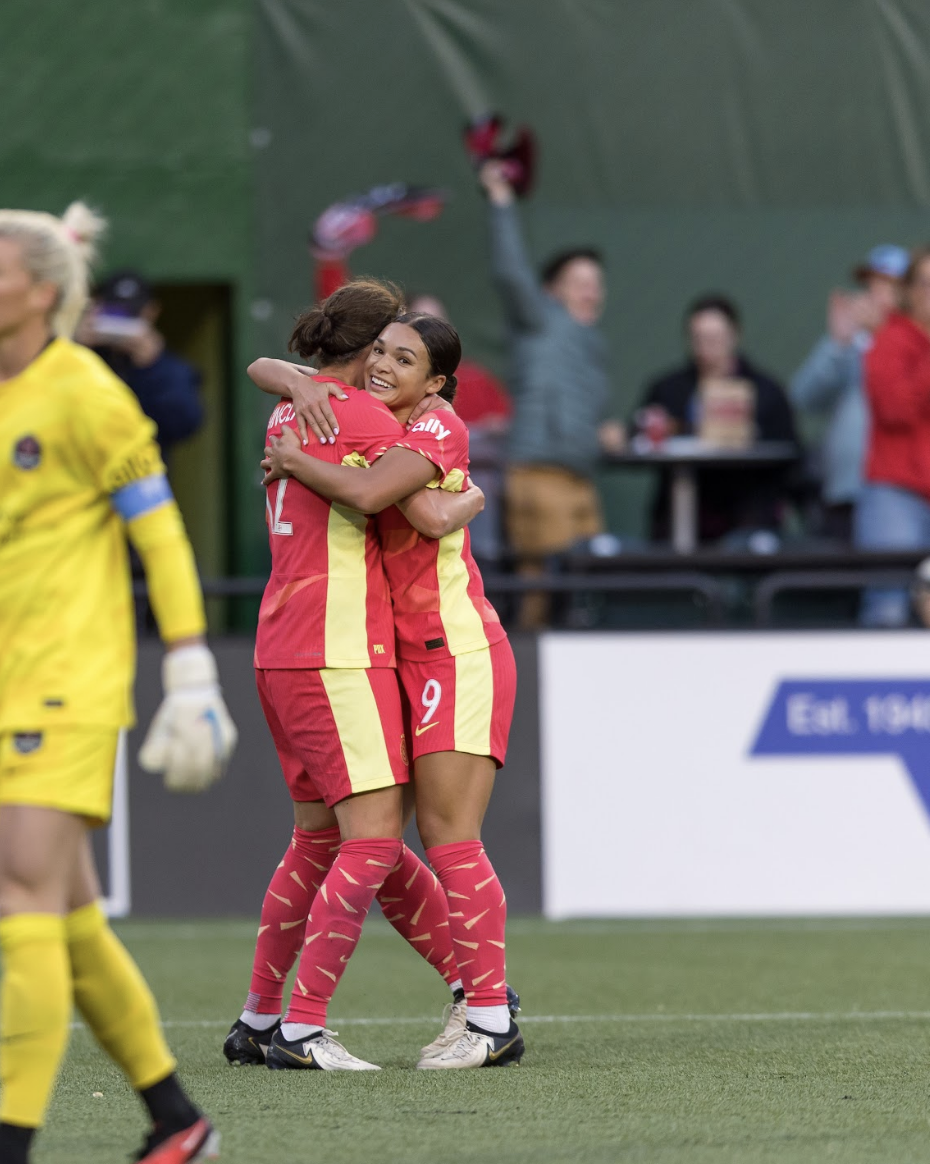
The keeper issue
Shelby Hogan posted her first clean sheet of the season on Saturday, making three saves against Chicago. While her decision-making on the line was sharper than in previous games, Hogan’s distribution and ability to build out of the back still remained a major issue for the Thorns, as she gave the ball away in compromising positions numerous times and was bailed out by the woodwork. Prior to the game against Houston, the Thorns signed Mexican international Emily Alvarado from the Dash to provide competition for Hogan for the starting role. It was a move that makes sense at first, but upon closer investigation, leaves a little to be desired. I have been an advocate that, with Bella Bixby out on maternity leave, Portland needs an experienced keeper available for training and games. The Thorns started the season with three keepers who had played in two NWSL regular season games between them, the most inexperienced goalkeeper union in the league.
Here is where the confusion lies: Alvarado also has zero NWSL regular season minutes, having served as Jane Campbell’s backup since Houston acquired her from Stade de Reims in early 2023. While she does have 39 starts in the D1 Arkema, she conceded 66 goals in those games. With the Thorns still working on building chemistry across their back line, bringing in another inexperienced keeper doesn’t make much sense. At this point, why not give Lauren Kozal a try in her second year with the team? Or even Kat Asman, who the Thorns drafted 39th overall and who has been with the team since the beginning of preseason. With a three-game week, I assume that we will see Alvarado in goal against Bay FC on Wednesday, and I am curious to see if her distribution and ability to organize the backline is any stronger than Hogan’s currently is.
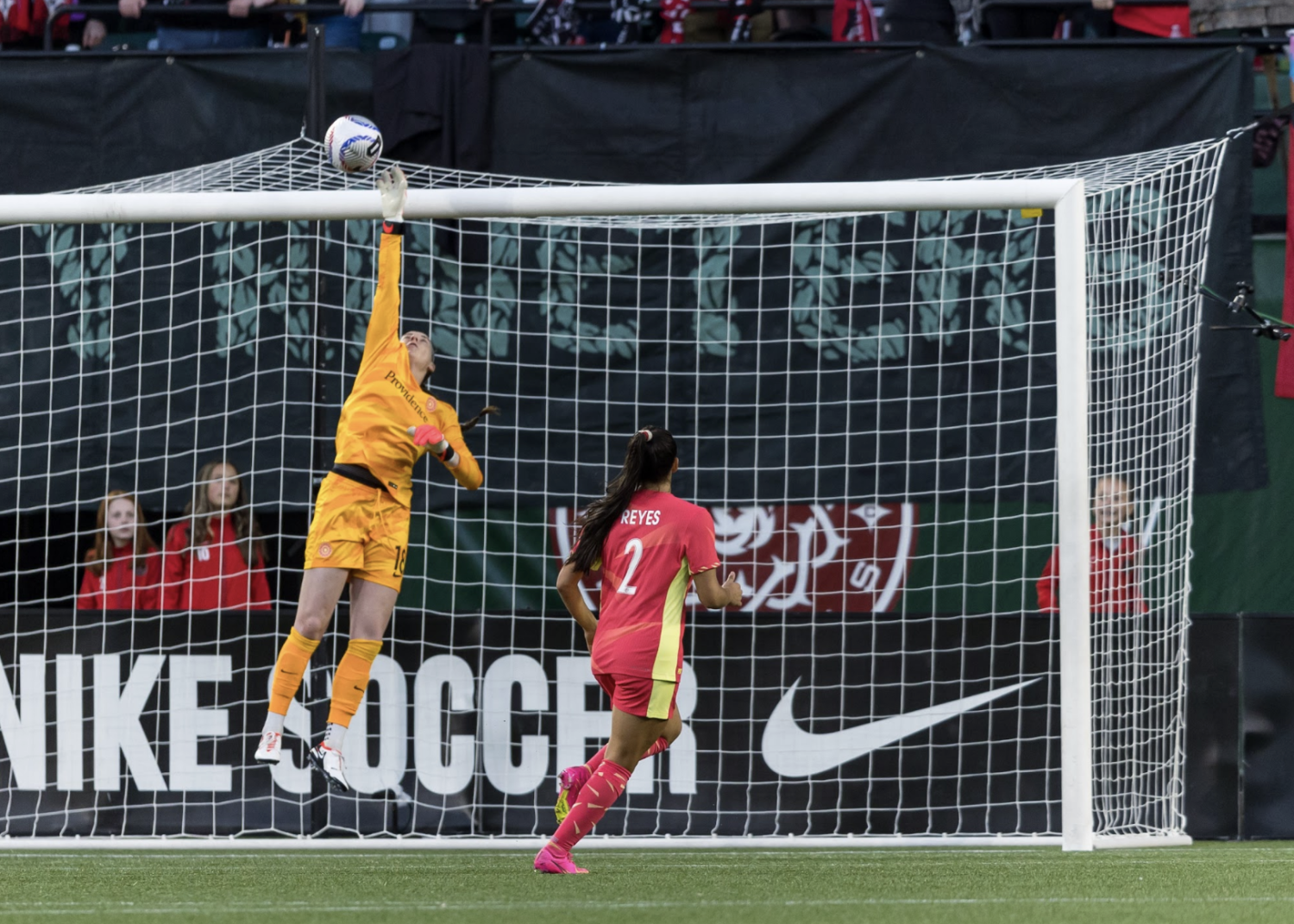
The Thorns’ one and only three-league-game week is this week, with the Bay and the Washington Spirit on deck for Wednesday and Sunday, respectively. It will be Gale’s first real test to see how he manages minutes for players to try to get nine points from the week.

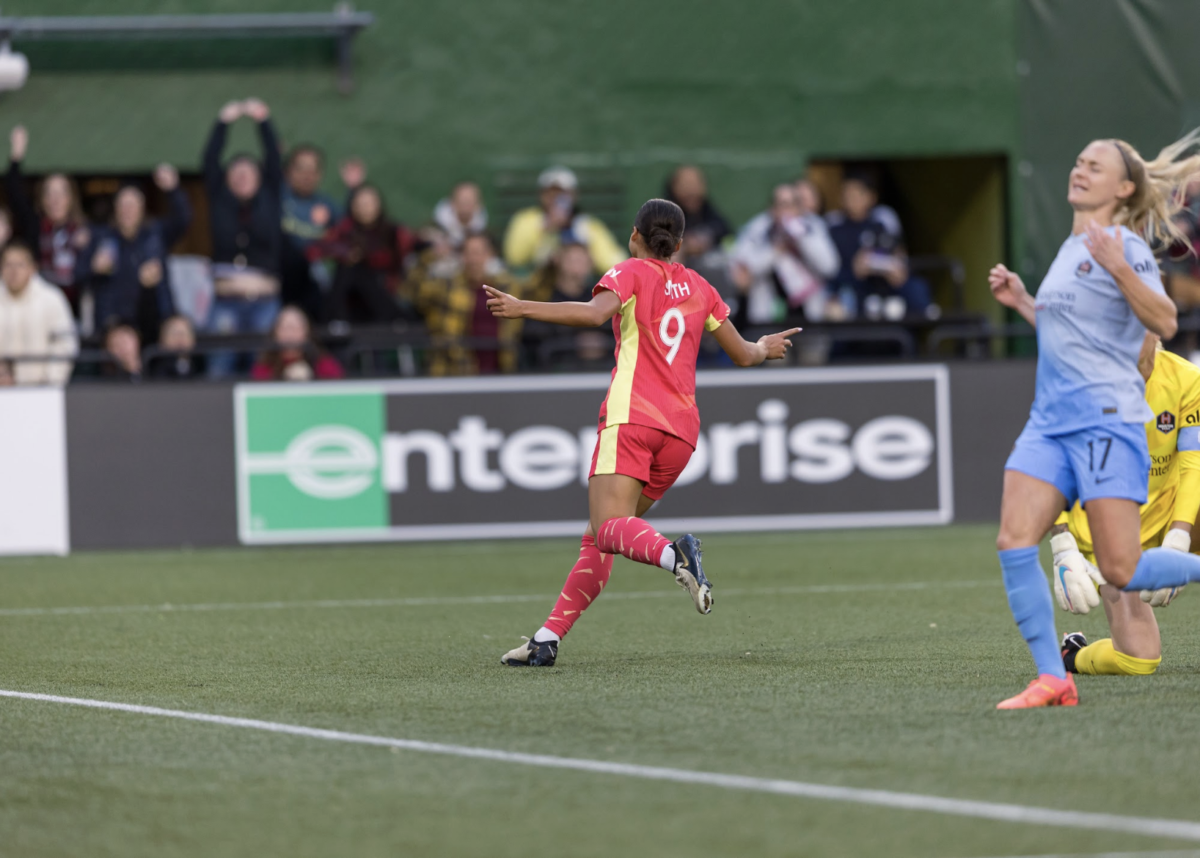

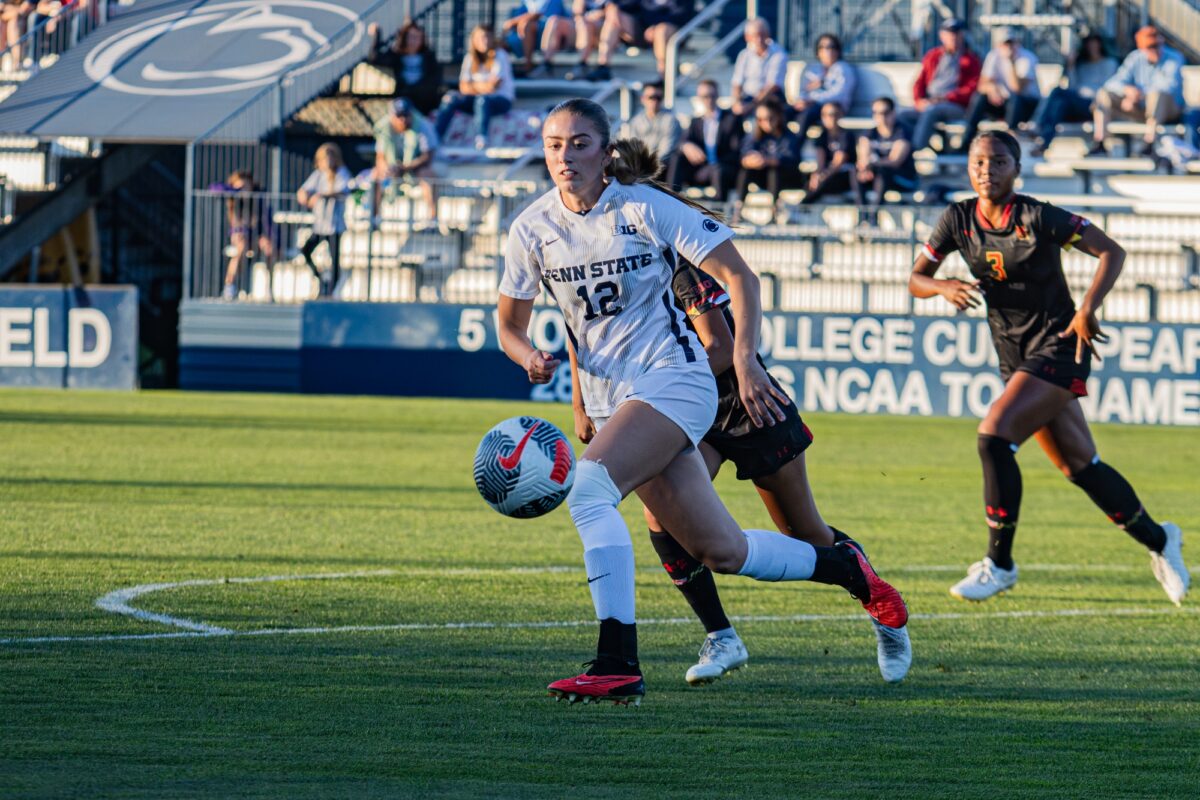
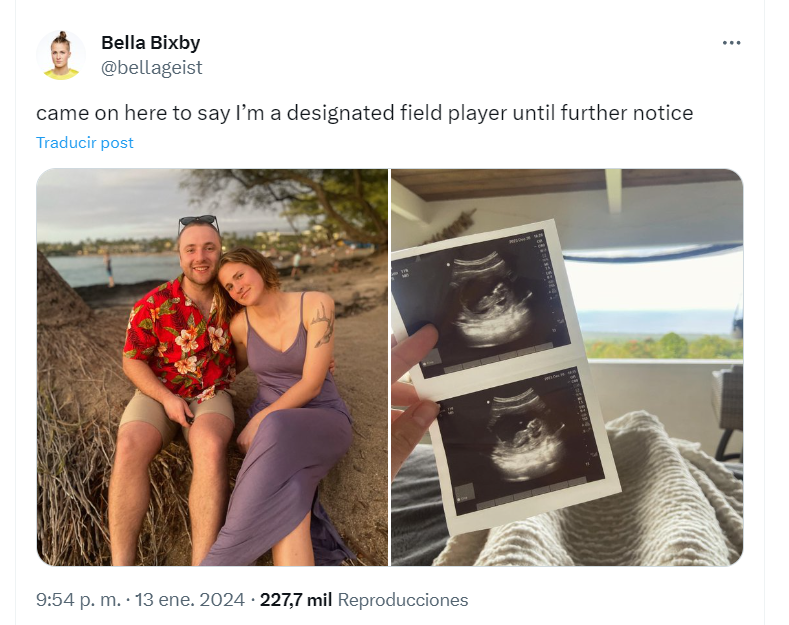
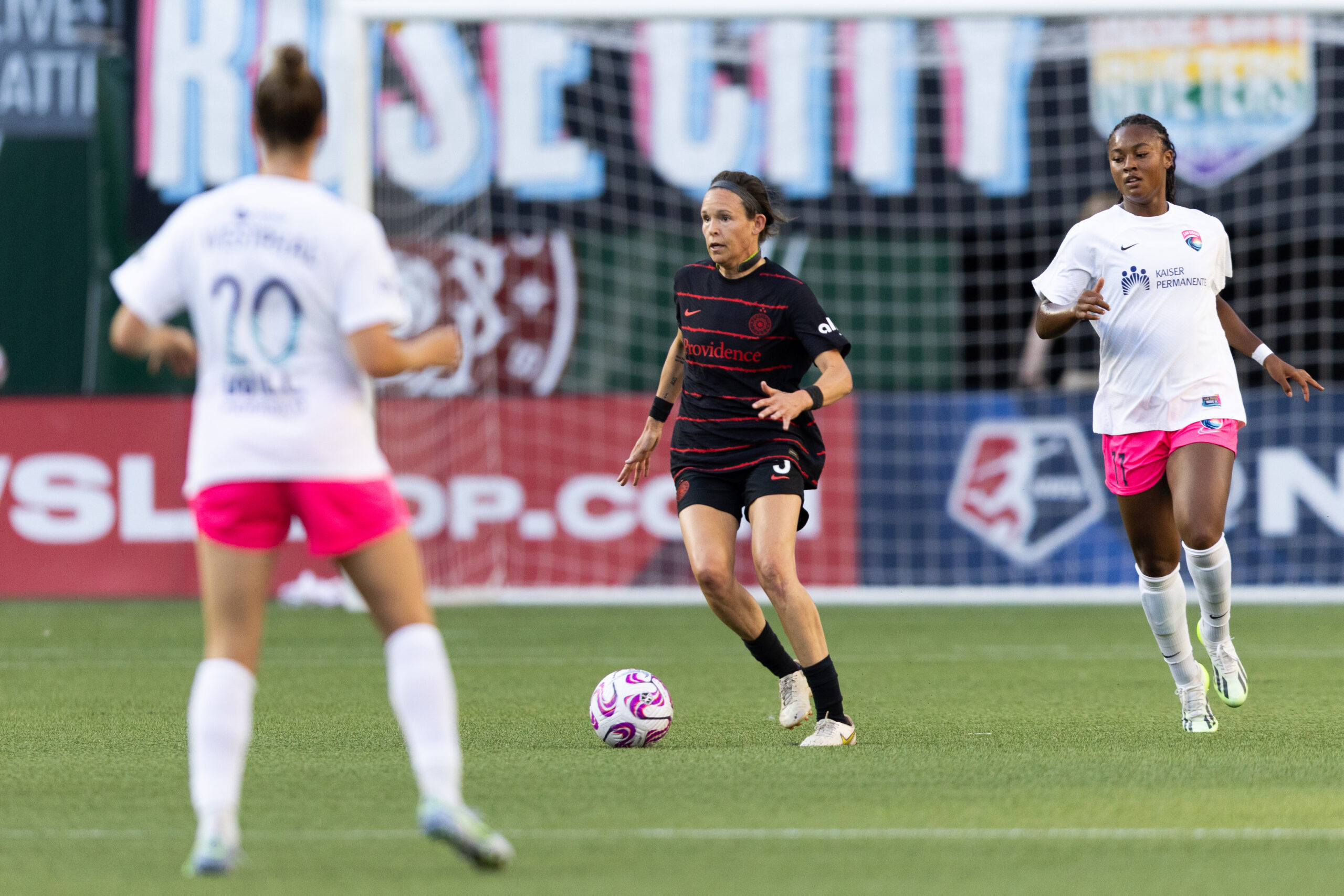
 Unlock with Patreon
Unlock with Patreon